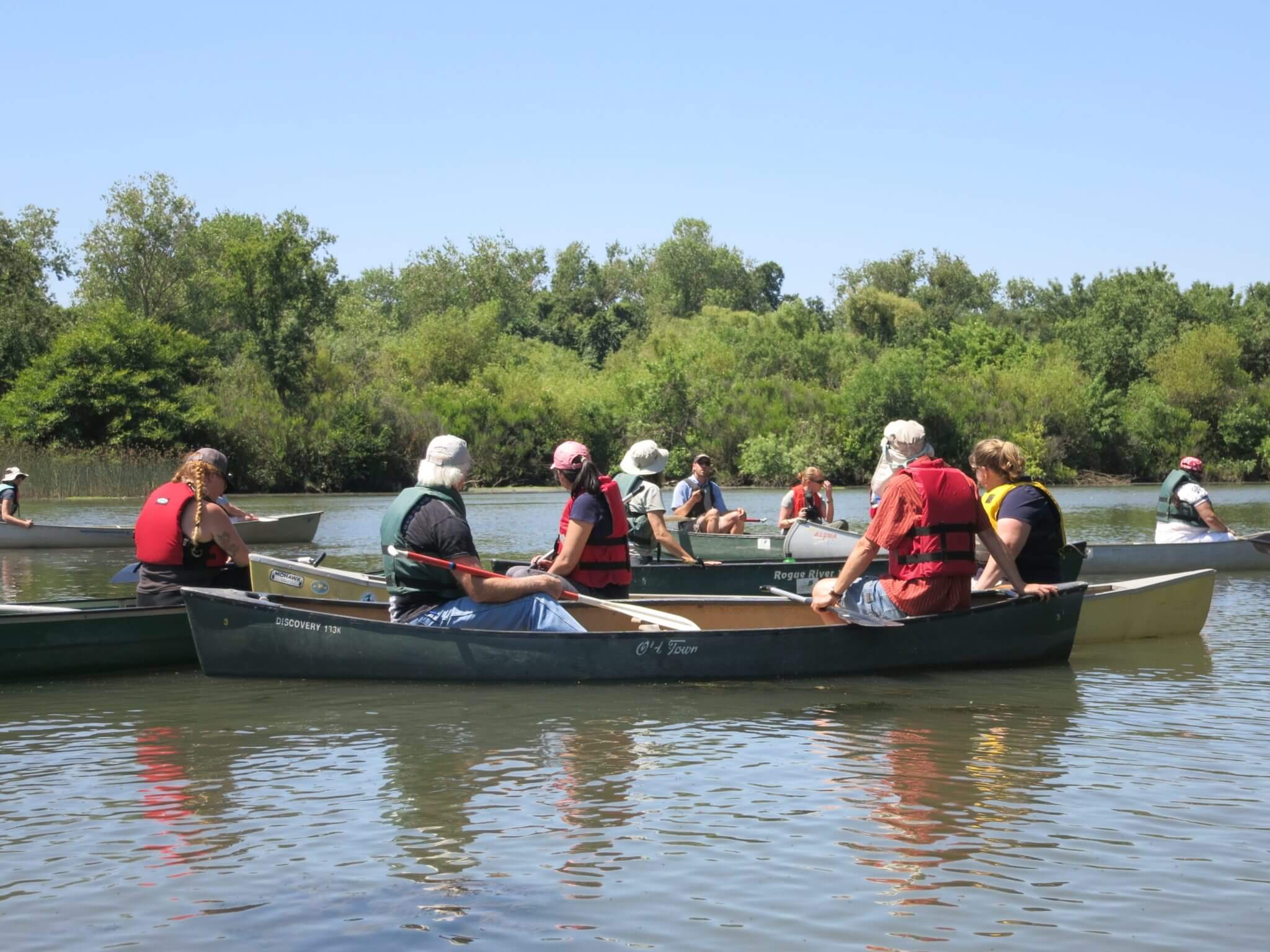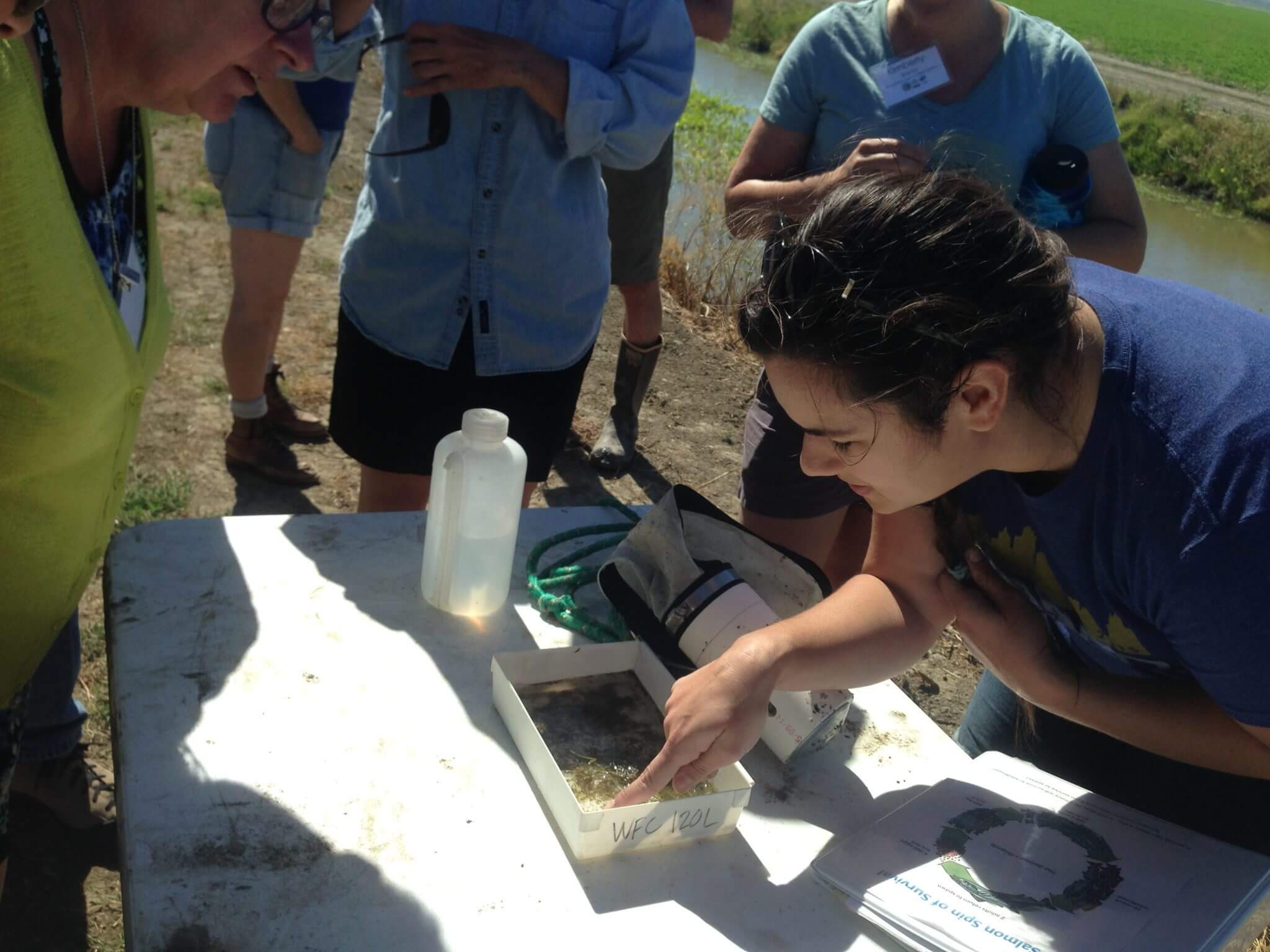“A free-flowing river—the last of its kind—winds through 80 miles of rich habitat. Down the western side of the Sierra Nevada and across the Central Valley, the Cosumnes River flows through farmland, pastures, rare oak woodlands, and wetlands that support migrating birds. Because no dams block its flow, salmon still spawn in its waters.”
~ from “Habitat for Humans and Wildlife” from the California Education and the Environment Initiative Curriculum, Unit 8.4.1 Land, Politics and Expansions in the Early Republic, Student Edition
In the greater Sacramento region the free-flowing Cosumnes River stands in contrast to the nearby American and Sacramento rivers, where an elaborate array of levees and dams influence the movement of winter flood waters. These rivers, and the complex flood management systems that protect urban areas while supporting agriculture, recreation, and habitat, are the dominant features of our regional ecosystem and provide a rich context for integrated teaching and learning.
The Sacramento Floodplain Ecology Institute, organized by the Region 3 coordinators from the California Regional Environmental Education Community (CREEC) Network, is an opportunity for educators to explore the local floodplains and learn firsthand from experts about the complex issues and challenges facing the region—as well as the exciting work being done in the areas of conservation, agriculture, biology, engineering, and policy. Participants include TK–12th grade teachers and informal educators. All of them find value and ways to apply the experiences and resources embedded in the institute, which include curriculum training, visiting floodplains with field biologists and agriculture practitioners, a tour of urban flood control projects with engineers and city managers, and a career panel with water professionals.
Increasing the environmental literacy of our students begins with increasing teacher understanding of the local environment and sharing resources that make it easy for them to use the environment in their teaching; especially sharing the excitement for learning about, caring about, and enjoying their local ecosystems. The Sacramento Floodplain Ecology Institute is an example of how regional CREEC coordinators facilitate that process. Its impact is far-reaching. Each year teachers share how the knowledge and excitement gained by learning from passionate resource professionals influences their own interest and excitement, which in turn influences their teaching in predictable and unpredictable ways that positively impact their students. Read on for participants’ reactions and a daily overview of the institute!
“This experience has made me look at watersheds, levees, rivers, and agriculture much more closely and differently. Before, they were just things I saw and never thought about. Now I think about how their role and my role interact and intertwine with each other.”
“I enjoyed learning how sometimes there is no perfect solution for something. This is very relevant for students, and something I know will engage them—especially if I give them the chance to debate and weigh different sides.”
“It was fun going to so many different sites and seeing such diverse areas right in our backyard, like nothing I had experienced!”
“Just spending time outdoors during the institute reminded me that this is something I love and is good for my well being. Since the institute, I’ve made a point to spend time outdoors weekly. Being inspired by the outdoors and using that to increase my well being helps me inspire my students as well.”
The Institute:
Day 1 is all about urban flood protection, engineering, and careers! The City of West Sacramento hosts and leads an exciting tour. We visit the Sacramento Weir, which was open for the first time in 10 years last winter, and three different levee projects, including a new setback levee and two urban parks within the levee system. Participants also receive training using the Project WET (Water Education for Teachers) curriculum as they learn technical skills and participate in hands-on activities. The final highlight is a career panel. Teachers learn about regional in-demand careers, related career pathways, and the types of skills they can help their students practice now to be successful in these careers later. The panelists are water resource professionals from UC Davis, local agencies, and businesses working in law, engineering, biology, public relations, and geographic information systems.
“I have to say that initially I didn’t think the career speakers would be of much use to a 5th grade teacher, but they were one of my favorite events! They were engaging and inspiring. After speaking to them, I realized they had much to offer myself and my students.”
“On the West Sacramento tour I got to see in-person some things I teach my students. We have a unit on the physics of mudslides. I am thinking we can do the same with flooding and erosion and it would be more relevant for students as it is a more local issue.”
Day 2 is all about getting out in nature at the Cosumnes River Preserve! There are a lot of exciting studies happening on the restored floodplains of this “living laboratory” pertaining to fish habitat, groundwater recharge, and river morphology. After checking out some of the breached levee sites with field biologists, we canoe! From the boats, we explore the confluence of the Cosumnes and Mokelumne rivers, and their interaction with the tidal waters from the bay.
“I loved getting out there and experiencing the ecology first hand.”
“This institute really inspired me to get back out into nature regularly, and to bring my students out into nature more.”
Day 3 is when we put the pieces together at Conaway Ranch, a rice farm in the Yolo Bypass. We explore the many benefits of the floodplain—agriculture, bird habitat, fish habitat, recreation, and flood control. The focus is on the Nigiri Project, which is a study about using rice fields in between harvest and planting seasons as a juvenile salmon habitat. We get to see how the research we learned, about the “living laboratory” that is the Cosumnes River Preserve, is applied to a managed floodway in the Yolo Bypass. Participants also get trained to use the Education and the Environment Initiative Curriculum.
“I teach about ancient civilizations and always mention we live in a valley very similar to the Nile… today I was able to think about how to make that more real for my students. I will definitely try to get out to the waterways with them.”
We return to the Cosumnes River Preserve in December where teachers share how they have used the resources from the summer institute in their classrooms. Not coincidentally, the Preserve is usually shared that day with the migrating birds that feast in the flooded rice fields! Bird biologists join us to guide our bird-viewing activity, and give hints for making bird-watching student-friendly. This is one more chance for the CREEC coordinators to connect teachers with local experts and continue to inspire them to share the local environment with their students.
The Sacramento Floodplain Ecology Institute is funded by the CA Department of Water Resources and is successful thanks to many partners, including the Yolo County Office of Education, Center for Land-Based Learning, City of West Sacramento, Cosumnes River Preserve, Water Education Foundation, and UC Davis Center for Watershed Sciences.






